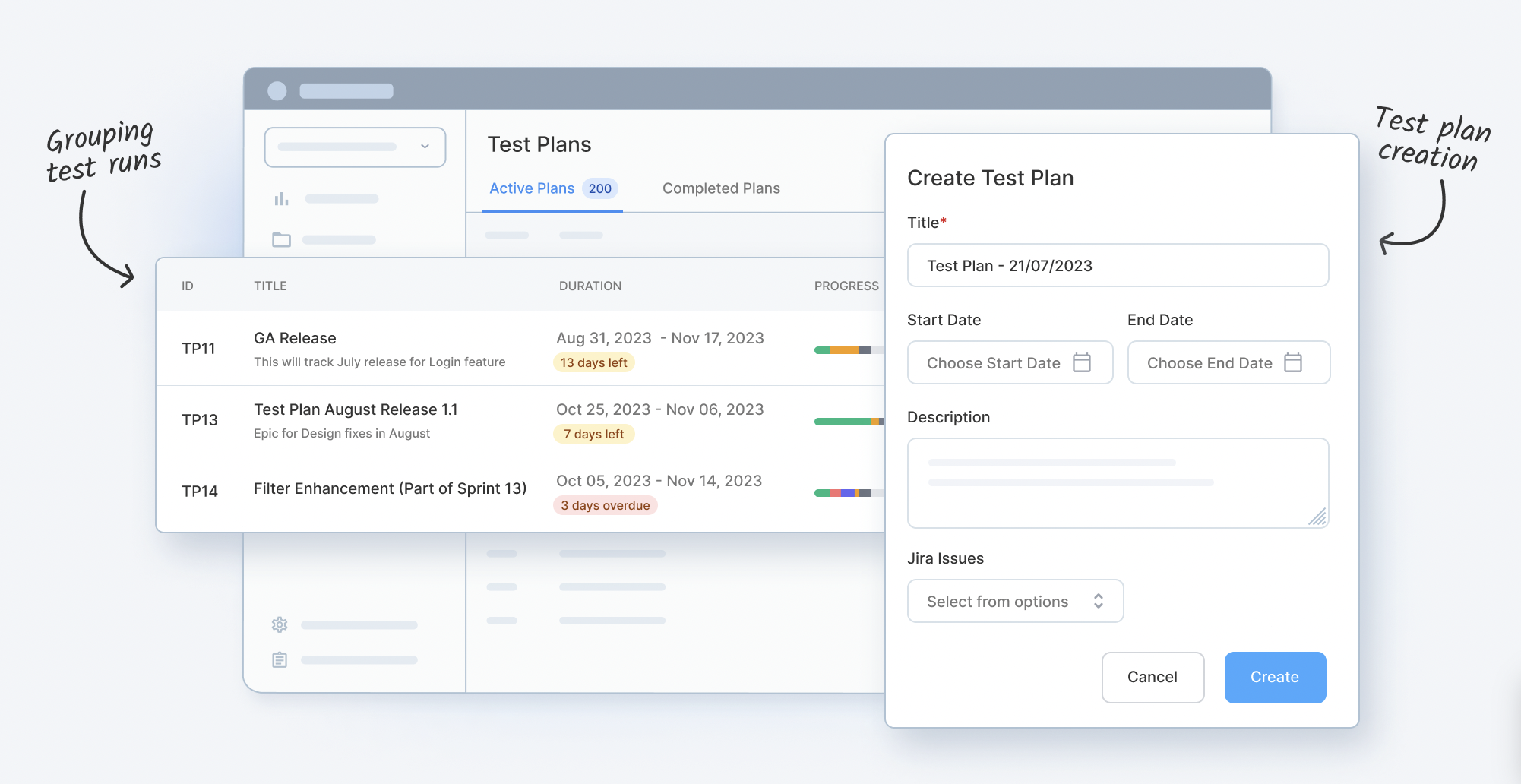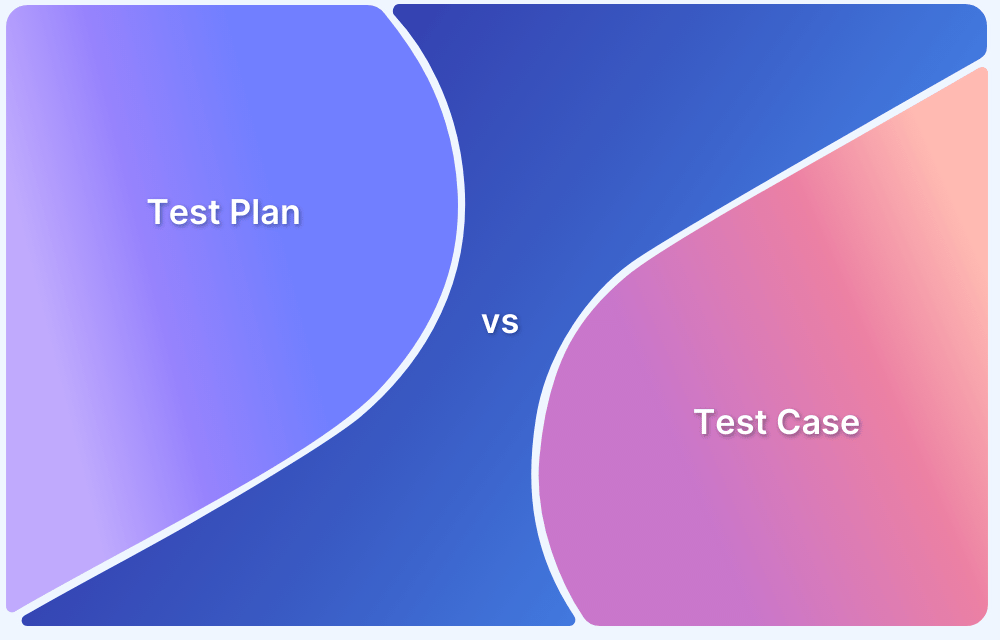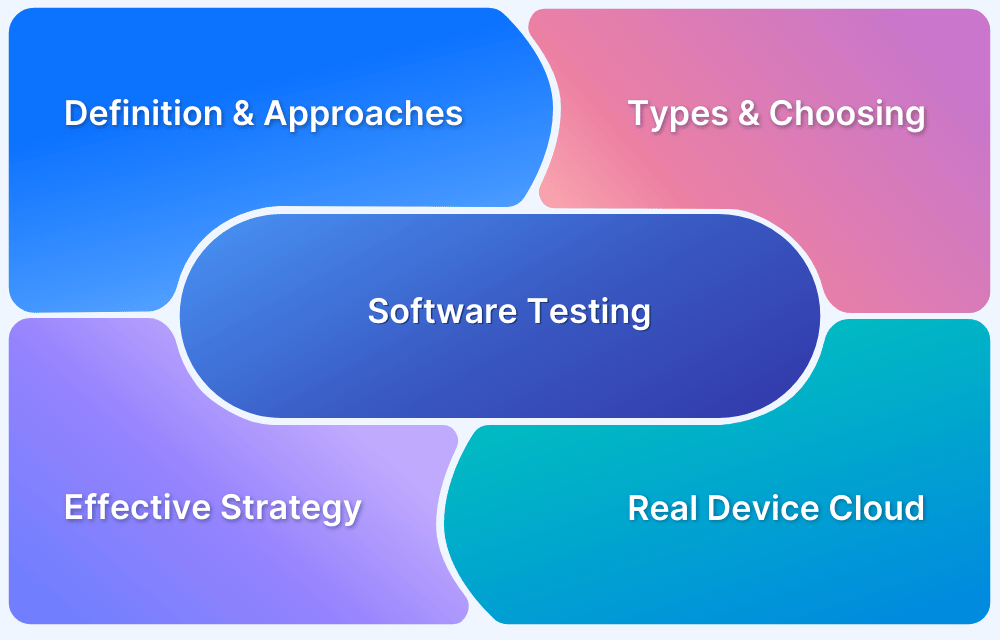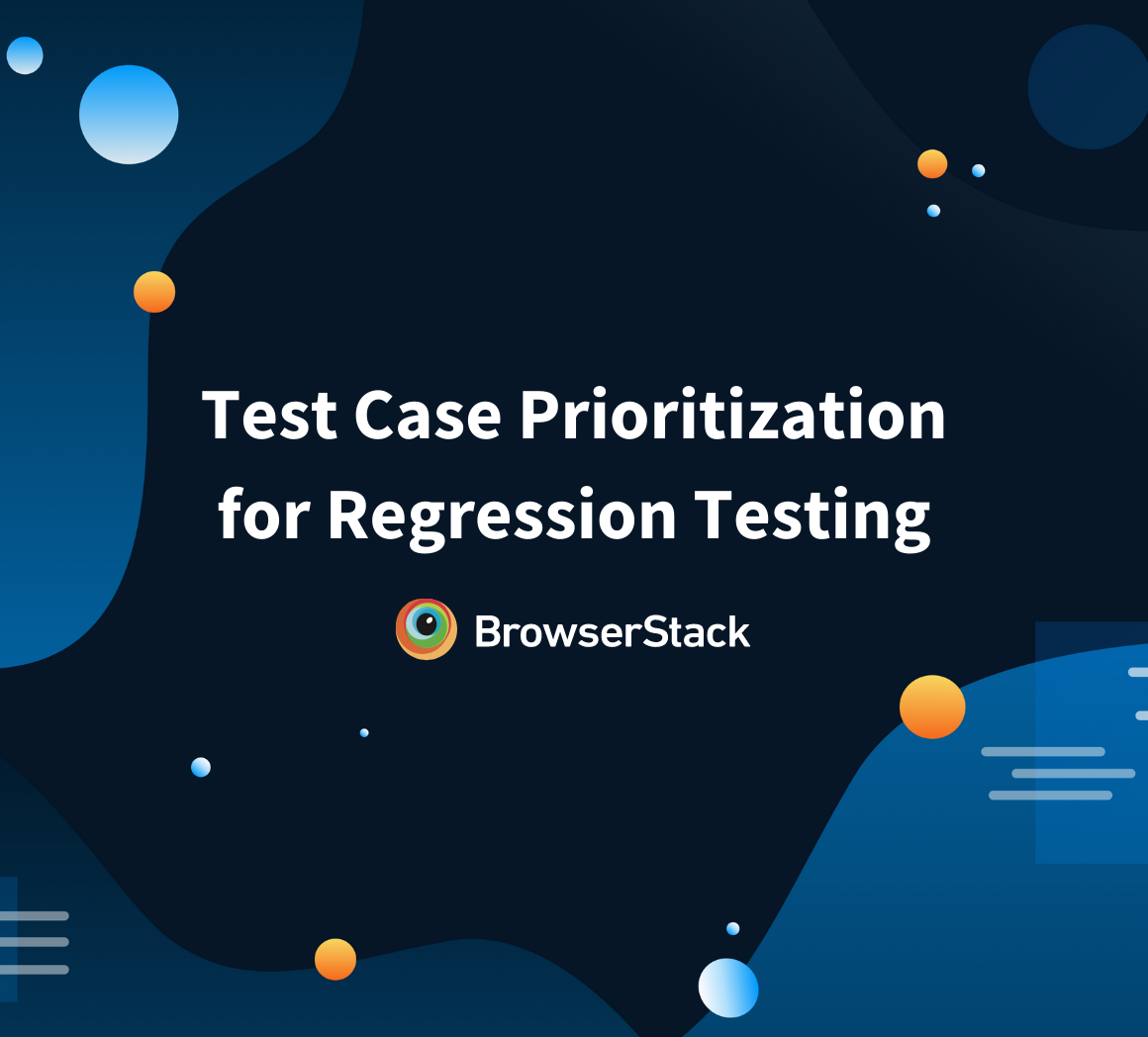The terms test plan and test strategy are often used interchangeably, but they serve distinct purposes and play different roles in the testing process.
Overview
Test Strategy vs Test Plan: Key Differences
- Test Strategy outlines the overall approach, while Test Plan details specific testing activities, resources, and schedules.
- Test Strategy defines principles, whereas Test Plan specifies what, when, and who tests, plus result authentication.
- Test Strategy covers the broad approach; Test Plan focuses on specific objectives and tasks.
- Test Strategy is created early; Test Plan follows and focuses on execution details.
- Test Strategy allows adaptability; Test Plan provides specific, rigid guidance.
This guide explores the differences between test strategy and test plan in detail.
What is a Test Plan?
Test Plan is a document that outlines the objectives, scope, approach, resources, and schedule for a software testing effort. It serves as a roadmap for testing activities and provides a comprehensive guide for testers and stakeholders involved in the testing process.
A test plan provides a structured framework for testing, ensuring that all necessary aspects of the software are thoroughly evaluated before release.
Read More: What is a Test Plan in Agile?
What is a Test Strategy?
A Test Strategy is a high-level document that outlines the approach, scope, objectives, and methods for testing a software application. It provides a framework for planning and executing testing activities throughout the software development lifecycle.
It guides testing activities throughout the project, defining risk mitigation, criteria, and testing types.
Read More: How to write a Test Strategy Document
Test Strategy vs Test Plan: Comparison
A test strategy outlines the high-level approach and goals for testing, while a test plan details specific testing activities for a project.
Here’s a comparison of their key aspects:
| Aspect | Test Strategy | Test Plan |
|---|---|---|
| Definition | A high-level document outlining the overall approach, principles, and goals of the testing process across the organization. | A detailed document describing specific testing activities, resources, schedules, and responsibilities for a particular project. |
| Objectives | To define the principles followed during the QA test procedure. | To outline how, when and what to test, who will test it, and who will authenticate the results. |
| Purpose | Provides high-level guidance for testing | Offers detailed instructions for testing |
| Scope | Outlines overall approach and methodology | Defines specific testing objectives and scope |
| Types | Different test strategies are: standard-compliant, methodical, model-based, analytical, reactive, consultative, & regression-averse strategies. | Different test plans are: type-specific, level-specific, & master test plans. |
| Audience | Testing team, project stakeholders | Testing team, project stakeholders |
| Level of Detail | High-level overview | Detailed guidance |
| Timing | Created early in the project lifecycle | Developed after Test Strategy |
| Content | Approach, objectives, methods | Objectives, scope, schedule, resources, tasks |
| Focus | Overall testing direction | Specific testing activities |
| Risk Management | Includes risk mitigation strategies | May include risk identification and mitigation |
| Communication | Communicates testing approach to stakeholders | Provides detailed instructions to testers |
| Flexibility | Provides flexibility for adapting to changes | Offers specific guidance for testing activities |
| Updates | May require updates as project progresses | May be updated based on test results or changes |
Purpose of Test Plans
The main purpose of a test plan is to ensure that software testing is conducted in a systematic and organized manner. It helps in:
- Define Testing Objectives: It helps define the goals and objectives of the testing effort, such as verifying functionality, ensuring quality, and mitigating risks.
- Scope Definition: It outlines the boundaries of testing, specifying what features, functions, and aspects of the software will be tested.
- Resource Allocation: It allocates resources such as human resources, time, and tools needed for testing.
- Risk Management: It identifies potential risks associated with the testing process and outlines strategies for mitigating them.
- Communication: It serves as a communication tool between stakeholders, ensuring that everyone involved in the project understands the testing strategy and approach.
Learn More: Software Testing Strategies and Approaches
Importance of Test Plan in Software Testing
The main Importance of a test plan is to ensure that software testing is conducted in a systematic and organized manner, which is crucial for the success of the testing process.
- Alignment with Project Goals: Ensures testing activities align with project requirements.
- Clarity for Testers: Provides a clear roadmap for testers, outlining what needs to be tested and how.
- Early Risk Identification: Helps identify potential risks and issues early in the project lifecycle, enabling timely mitigation.
- Transparency for Stakeholders: Serves as a reference document for stakeholders, providing transparency and confidence in the testing process.
- Assistance for Entire Team: Assists the entire team, including managers, developers, and clients, in understanding testing specifics and requirements.
- Risk Management: Guides software testers through the risk mitigation process, preventing risk incidents.
- Quality Assurance: Ensures that software meets overall necessities guiding its design and development.
- Communication Tool: Acts as a communication tool between different teams involved in the software development process.
- Documentation: Provides a documented record of testing activities, aiding in auditing and future reference.
- Continuous Improvement: Offers opportunities for feedback and lessons learned, contributing to continuous improvement in testing processes and practices.
Read More: Benefits of Test Management
Key Components of the Test Plan Document
The key components of a test plan document typically include:
- Introduction: Overview of the document and its purpose.
- Test Objectives: Goals and objectives of the testing effort.
- Scope: Inclusions and exclusions of the testing activities.
- Test Strategy: Approach and methods for conducting testing.
- Test Environment: Details of the testing environment, including hardware, software, and configurations.
- Test Schedule: Timeline and milestones for testing activities.
- Risks and Mitigation: Identification of potential risks and strategies for mitigating them.
- Resource Allocation: Allocation of resources, roles, and responsibilities.
- Reporting and Metrics: Procedures for reporting test results and tracking metrics.
How to Create a Test Plan Using BrowserStack Test Management
BrowserStack Test Management is a tool that can help create test plans by providing features such as test case management, test execution, and reporting. To create a test plan using BrowserStack Test Management:
- Log in to the BrowserStack Test Management platform.
- Navigate to the Test Plans section and create a new test plan.
- Define the test objectives, scope, and strategy.
- Add test cases to the test plan, organizing them into test suites as needed.
- Assign test cases to testers, specifying execution details such as priority, environment, and schedule.
- Review and finalize the test plan, ensuring that all necessary components are included and all stakeholders are informed.
Why Use BrowserStack Test Management Tool for Test Planning
BrowserStack Test Management is an AI-powered platform designed to streamline test planning and execution, accelerating test case creation by up to 90% and improving coverage by 50%.
Its seamless integration with tools like Jira and Azure DevOps, coupled with real-time visibility through customizable dashboards, makes it ideal for teams of all sizes. With AI-driven agents, it automates test case creation, intelligent test selection, and deduplication, simplifying both manual and automated testing workflows.
Key Features:
- AI-Powered Test Case Creation: Automatically generates test cases from requirements, user stories, or text prompts, saving time and reducing manual effort.
- Test Deduplication Agent: Identifies and recommends merging or removal of duplicate tests, ensuring an efficient and clean test suite.
- Low-Code Automated Test Authoring: Converts manual test cases into low-code automated tests, making automation accessible to non-technical users.
- Test Selection Agent: AI identifies the most relevant tests to run, optimizing test coverage and efficiency.
- Powerful Dashboard Analytics: Customizable dashboards provide real-time insights, tracking testing metrics and automation coverage, with historical trend analysis.
- Quick Import & Custom Field Mapping: Import test cases rapidly from CSV files or existing management tools with automatic field mapping and on-the-fly custom field creation.
- Debugging Insights: Gain deep insights into the performance and quality of test runs through integrated observability tools for faster debugging and issue identification.
The free version of BrowserStack Test Management offers unlimited test cases, robust integrations, and real-time reporting capabilities.
Best Practices for Creating a Test Plan
Here are some of the best practices to follow while creating a test plan:
- Gather all the requirements of your project, both functional and non-functional, to analyze and understand your project and its objectives clearly.
- Correctly document what your testing efforts aim to achieve, such as performance validation, issue detection, etc.
- Clearly specify what will be included and excluded from your testing efforts to prevent scope creep.
- Choose the right testing methods as per your objective.
- Identify and assess potential risks to avoid roadblocks and delays in your project.
- Set proper conditions for starting and completing test phases.
- Review and update your test plan as your project progresses and evolves.
Read More: How to Perform Software Risk Assessment
Purpose of Test Strategy
The primary purpose of a test strategy is to provide a roadmap for testing efforts and ensure alignment with project goals and requirements. Key purposes include:
- Guiding Testing Efforts: The Test Strategy serves as a roadmap for testing activities throughout the software development lifecycle.
- Defining Testing Objectives: It outlines the goals and objectives of the testing effort, helping align testing activities with project goals and requirements.
- Setting Testing Scope: The Test Strategy outlines the testing scope, including what features will be tested, any limitations, and exclusions.
- Establishing Testing Approach: Describe testing methods for consistency.
- Identifying Testing Resources: Ensure adequate resources for testing.
- Managing Risks: The Test Strategy identifies and mitigates potential testing risks, minimizing their impact.
- Communicating with Stakeholders: It serves as a communication tool between project stakeholders, ensuring that everyone involved in the project understands the testing approach, objectives, and expectations.
- Ensuring Compliance: The Test Strategy ensures testing activities adhere to standards and regulations.
- Facilitating Decision-Making: It provides insights for informed decisions on testing priorities and resource allocation.
- Improving Quality: The purpose of a Test Strategy is to enhance software quality and reliability through effective, efficient, and systematic testing.
Read More: DevOps Testing Strategy
Importance of Test Strategy in Software Testing
The importance of a test strategy lies in its ability to ensure that testing activities are conducted effectively and efficiently. Key reasons for its importance include:
- Ensuring Consistency: A well-defined test strategy ensures consistency in testing activities across projects and teams, leading to better quality and reliability of software products.
- Improving Efficiency: By providing a structured approach to testing, a test strategy helps optimize testing efforts, leading to improved productivity and resource utilization.
- Enhancing Quality: A test strategy helps identify potential risks and establish criteria for test execution, thereby contributing to the overall quality and reliability of the software.
- Mitigating Risks: By identifying risks early in the project lifecycle and outlining strategies for mitigation, a test strategy helps minimize the likelihood of issues impacting the software’s quality and performance.
- Facilitating Communication: A test strategy serves as a communication tool between stakeholders, ensuring that everyone involved in the project understands the testing approach, objectives, and expectations.
Key Elements of a Test Strategy Document
A typical test strategy document includes the following key elements:
- Introduction: Overview of the document and its purpose.
- Testing Objectives: Goals and objectives of the testing effort.
- Scope of Testing: Inclusions and exclusions of testing activities.
- Testing Approach and Methodology: Approach and methods for conducting testing.
- Testing Techniques and Tools: Techniques and tools to be used for testing.
- Test Environment: Details of the testing environment, including hardware, software, and configurations.
- Risks and Mitigation Strategies: Identification of potential risks and strategies for mitigating them.
- Roles and Responsibilities: Allocation of roles and responsibilities within the testing team.
- Reporting and Metrics: Procedures for reporting test results and tracking metrics.
Read More: How to write a Test Strategy Document
Best Practices for Creating a Test Strategy
Here are some of the best practices to follow while creating a test strategy:
- Align your test strategy with your business goals and ensure it supports both the organization’s and project’s objectives.
- Create the strategy to cater to your application type, target audience, and potential risks.
- Make sure that you correctly define the areas that need to be tested like functional, non-functional and system boundaries.
- Conduct risk evaluation and likewise prioritize your testing activities.
- Follow consistent testing standards, workflows, and practices throughout the team.
- Choose the right testing approaches (like automated or manual testing),and test levels according to the project.
- Plan for non-functional testing with the likes of security testing, performance testing or usability testing to facilitate a comprehensive quality assurance.
How are Test Plan and Test Strategy Related
Though they serve different purposes, test plan and test strategy are closely related.
- The test strategy provides a comprehensive outline for testing the app, while the test plan is a more actionable document that implements the strategy for a specific testing activity.
- The test plan complies with the guidelines in the test strategy but it will cater to the specific requirement of the project or product.
Conclusion
While the Test Strategy sets the direction and overall approach for testing, the Test Plan provides detailed instructions and guidelines for executing testing activities. The Test Strategy focuses on high-level objectives and principles, while the Test Plan delves into the specifics of how testing will be conducted. Both documents are essential for effective testing and project management.
BrowserStack’s Test Management tool helps you seamlessly create and manage tests. With its user-friendly interface and robust features, it enables users to plan and seamlessly implement their test strategies. Ensure comprehensive test coverage and streamline your testing process with BrowserStack.









